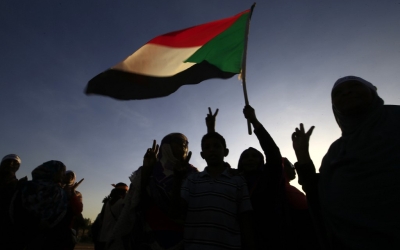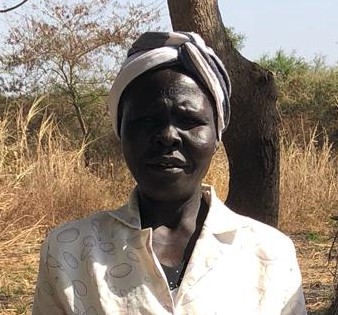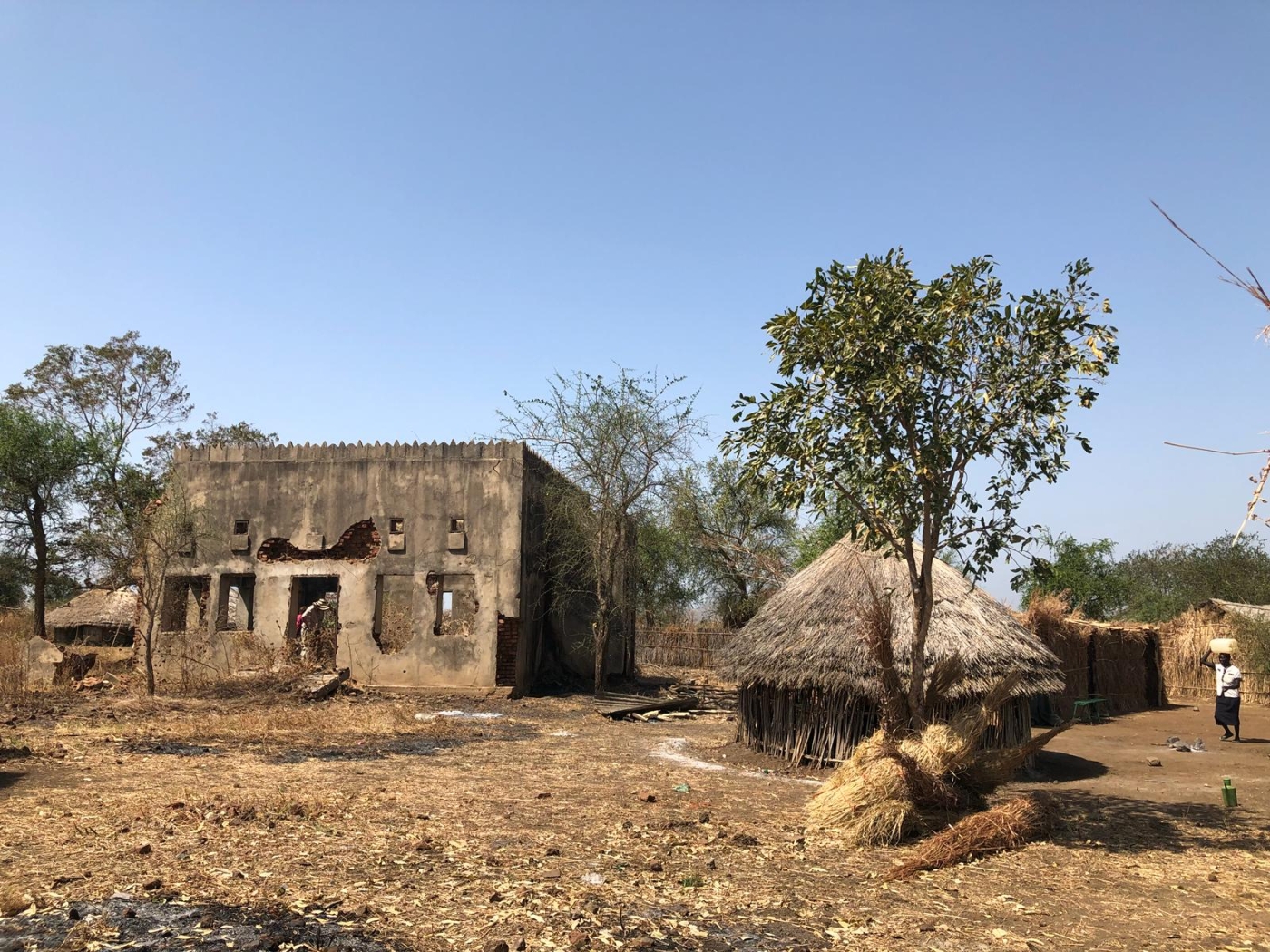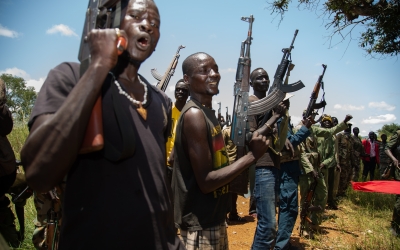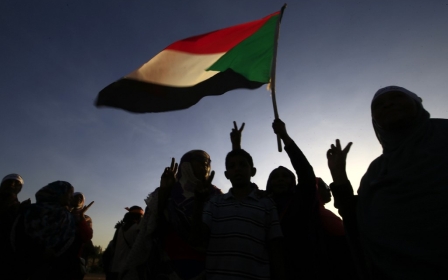In Sudan's Blue Nile state, cautious hopes of peace amid the ruins of war
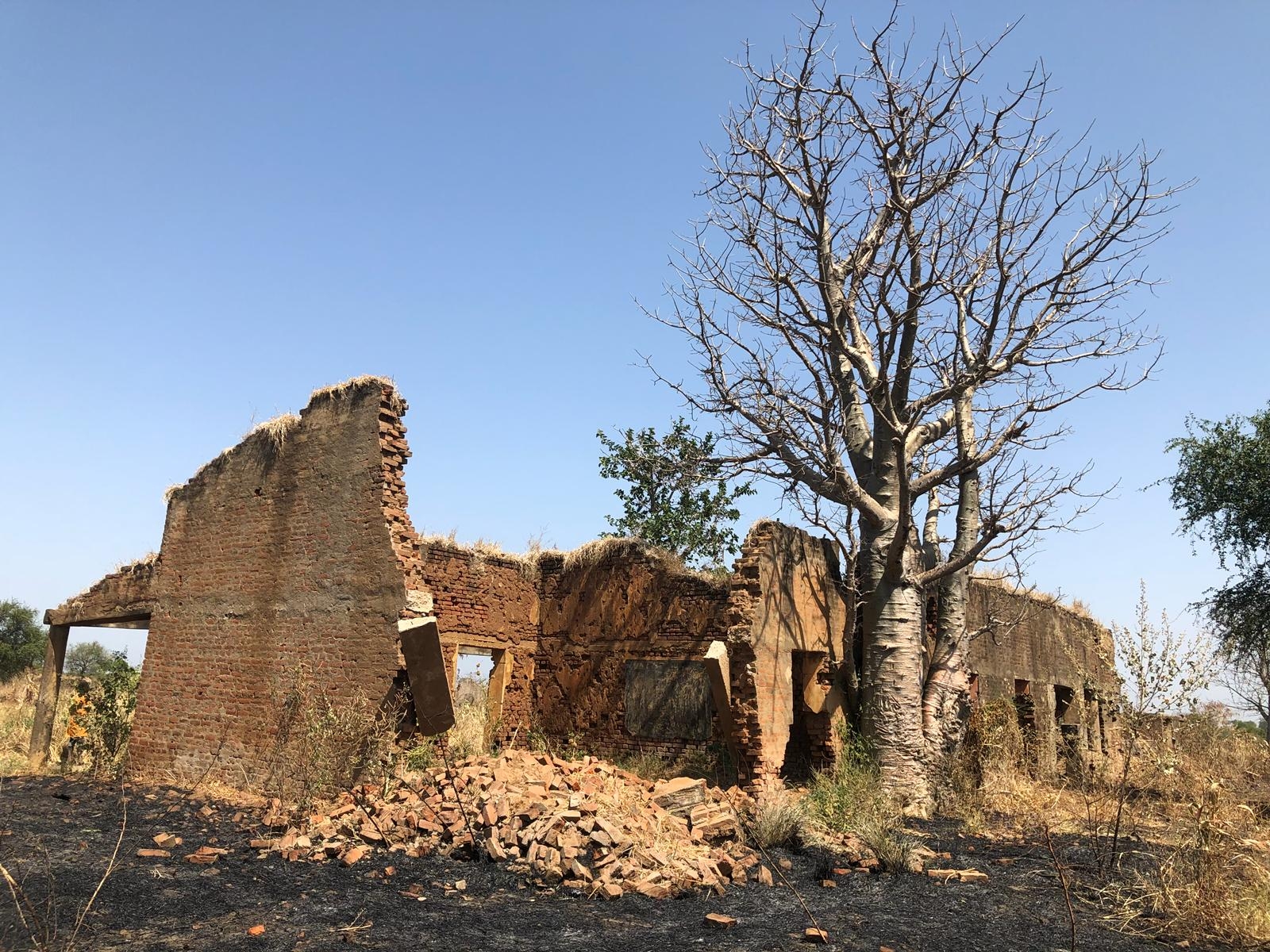
Last week’s provisional peace agreement struck between Sudan’s transitional government and one of the country’s main rebel groups has brought cautious hopes of an end to decades of conflict and instability in the restive Blue Nile and South Kordofan provinces.
Friday’s deal signed by Malik Agar, the leader of one faction of the Sudan People's Liberation Movement-North (SPLM-N), was the most significant breakthrough so far in months of talks between Khartoum and rebel groups in Juba, the capital of neighbouring South Sudan.
For the vulnerable people of Blue Nile and South Kordofan’s Nuba Mountains region, improved relations between Khartoum and the rebels could be the difference between life and death.
During a trip this week into rebel-held Blue Nile state from South Sudan, Middle East Eye saw bombed out schools, a destroyed clinic and a teacher training college in ruins. Villagers blame the destruction on Sudanese air strikes which they said had targeted civilians indiscriminately.
Their accounts are consistent with reports by human rights organisations Amnesty International and Human Rights Watch, which since 2011 accused the Sudanese military under former president Omar al-Bashir of indiscriminate bombing and ground attacks targeting civilians.
The conflict has largely cooled since Bashir was toppled last year, but the devastation caused by years of war are plain to see.
There were no tarmacked roads. We bumped along potholed tracks mostly worn away by recent floods. Villagers passed us, making the long journey on foot to refugee camps in the south.
Soldiers in flip flops
The border itself was marked by a string across the road manned by a handful of South Sudanese soldiers wearing flip flops and with machine guns slung over their shoulders.
An hour’s journey further north, MEE met villagers in a local administrative centre for the Chali area, which was made up of three huts beside a bombed out mosque. The villagers warned us to watch out for landmines.
'The planes bombed indiscriminately. Everyone was targeted, even small goats'
- Hyat, widow and mother of eight
Hanna, a mother of six children, described the horrors of war: “Planes came at any time, day or night, sometimes four times in a single day.
“We couldn’t sleep or work.”
When the planes attacked she would run with her children to hide in ditches, which could be just as dangerous as the bombs, she said.
“Once I was bitten on my back by a scorpion.”
She spoke with difficulty because on one occasion, escaping the bombs, a snake reared up in front of her and spat venom into her mouth.
“The planes bombed indiscriminately,” added Hyat, a widow and mother of eight.
“Everyone was targeted, even small goats.
“We couldn’t cook food on a fire at night for fear of signalling our whereabouts. We could not cultivate food as a result of the bombing. We ate the leaves and fruits and grasses.”
Looming famine
The villagers said that the bombs stopped a year ago, but that was not the end of their problems.
“We don’t have medicine. We don’t have school materials and many schools have been destroyed. We now teach under the trees. This year, due to flooding, our crops have been destroyed,” Yahi Mahiadin, the head of the local administration, told MEE.
Phillip Idris, a senior tribal chief, said that he feared the region would starve because of the damage to crops caused by the floods.
“The floods this year were not normal,” he said.
“They took away our animals, goats, sheep, chicken. People lost their houses. Many have been displaced. People are not strong enough to cultivate the crops. This year I believe there will be famine.”
The mooted peace deal will not in itself solve these problems, but the return of security would enable a return of humanitarian aid and permit these villagers to rebuild their shattered economy.
One sign of change was a recent visit from the World Food Programme’s executive director David Beasley on 18 December last year. This was the first time a UN humanitarian agency had entered Blue Nile in almost a decade.
But a crucial obstacle remains.
Separatist roots
The roots of the SPLM-N lie in the separatist movement which fought the Sudanese army in a brutal civil war from 1983 until an internationally-brokered peace deal was signed in 2005, leading to the secession of South Sudan in 2011.
SPLM-N fighters split from the southern separatists and resumed their armed struggle in the same year as it became clear that South Kordofan and Blue Nile states would remain within Sudan.
But the SPLM-N is itself divided.
The area MEE visited is not controlled by Agar’s SPLM-N faction, which negotiated last week’s peace agreement, but rather by a separate SPLM-N faction led by Abdel Aziz Alhilu.
Crucially, Alhilu did not put his name to the document. Until he does, there is a real prospect that fighting will resume.
Alhilu’s faction dominates by far the greater part of the two regions and has a much more powerful military presence.
Who are Sudan's rebel groups?
+ Show - HideSRF: Sudanese Revolutionary Front
Rebel groups fighting in Darfur, Blue Nile State and South Kordofan formed the SRF in 2011 to unite efforts in talks with the government and have advocated for greater representation for minorities and marginalised communities during Sudan's post-Bashir transition
SPLM: Sudan People's Liberation Movement
Founded by the iconic rebel leader John Garang, who aimed for a democratic Sudan, the SPLM fought a war against the Sudanese state that eventually led to the secession of South Sudan in 2011. It is now South Sudan's ruling party, led by President Salva Kiir.
SPLM/N: Sudan People's Liberation Movement - North (Agar faction)
Garang's allies formed a northern branch of the SPLM after South Sudan's independence to focus on establishing the SPLM's vision of equality in Sudan. In 2011, SPLM-N chairman Malik Agar was removed by Bashir from his elected position as governor Blue Nile state and launched a rebellion that saw him take control of part of the region.
SPLM/N (Alhilu faction)
The group's vice-chair Abdel Aziz Alhilu splintered to create a faction focused on the grievances of South Kordofan, which borders South Sudan, and has become the most influential Sudanese rebel faction, fighting from the Nuba mountains and controlling large amounts of territory.
SLA/AW: Sudan Liberation Army - Abdul Wahid faction
In 2001 leaders from different indigenous Darfuri communities formed the Sudan Liberation Army to fight Bashir's government, claiming they represented Sudan's marginalised communities. The government was accused of carrying out genocide in its response, which used militias known as the Janjaweed to attack Darfuri communities.
Ethnic Fur, Khartoum-educated lawyer Abdul Wahid was the original chairman and now leads his own faction after the group splintered. Since 2016, Sudanese forces have been trying to clear SLA-AW fighters from the Jebel Marra area of Darfur.
SLA/MM: Sudan Liberation Army - Minni Minnawi faction
SLA commander Minni Minnawi, from the Zaghawa herder community, split from Abdul Wahid and formed his own faction. They have had very little presence in Darfur in recent years, basing themselves in neighbouring Libya.
JEM: Justice and Equality Movement
Founded based on grievances about inequality of power in Sudan and with more religious affiliation than other rebel groups, including leaders who were former members of the Islamist movement, JEM eventually became the most powerful Darfuri group. In 2008 it attempted to overthrow the government by storming Khartoum, only halted when they clashed with Sudanese forces in the capital's sister city Omdurman.
He is holding out for the Blue Nile and South Kordofan regions to be given secular status, a very sensitive concession for the transitional government, which still contains former members of Bashir’s Islamist-rooted government.
Nonetheless, last year’s political upheaval and pro-democracy protests in Khartoum have led to a dramatic change in atmosphere. In one particularly symbolic moment, Sudan’s prime minister, Abdalla Hamdok, visited Alhilu’s SPLM-N stronghold of Kauda in South Kordofan’s Nuba Mountains.
Hamdok, who comes from the area, was greeted by joyous crowds, in scenes which appeared to suggest a growing desire on all sides to find a political solution.
Yasir Arman, the deputy leader of the SPLM-N faction that signed Friday’s agreement, was sentenced to death under Bashir’s rule. He told MEE: "We want to change our means of struggle from armed struggle to political struggle.
"Armed struggle used to be the fashion. The Kalashnikov was the symbol of freedom in the 1960s and 1980s. Nowadays, as a guerilla movement, we have to change."
But one observer close to the negotiations told MEE that the prospects of any final peace deal would depend on Alhilu signing up to it.
"His men are well armed and well trained. A peace without them is not credible," he said.
Negotiations in Juba continue and hopes are rising. But real and enduring change for the forgotten people of Chali is not yet guaranteed.
Middle East Eye delivers independent and unrivalled coverage and analysis of the Middle East, North Africa and beyond. To learn more about republishing this content and the associated fees, please fill out this form. More about MEE can be found here.


